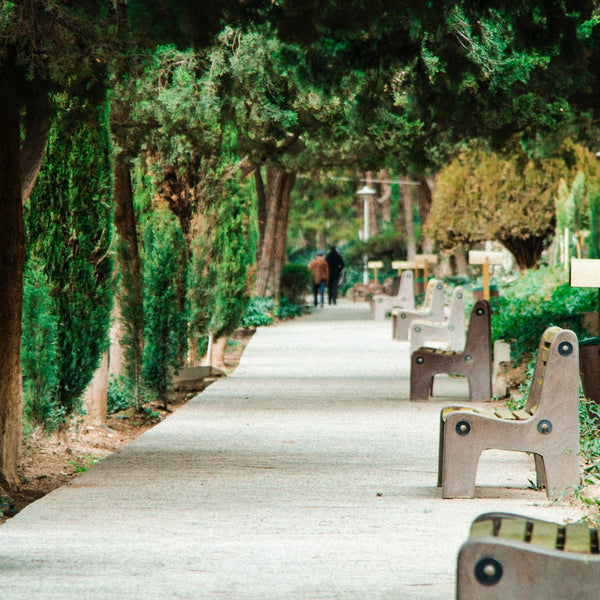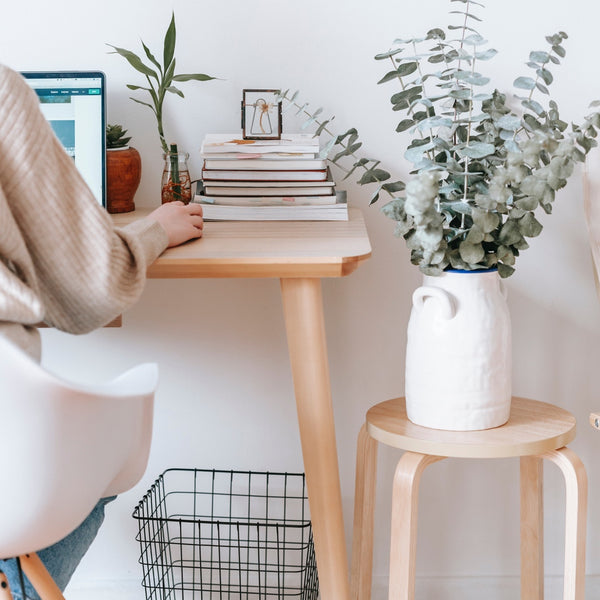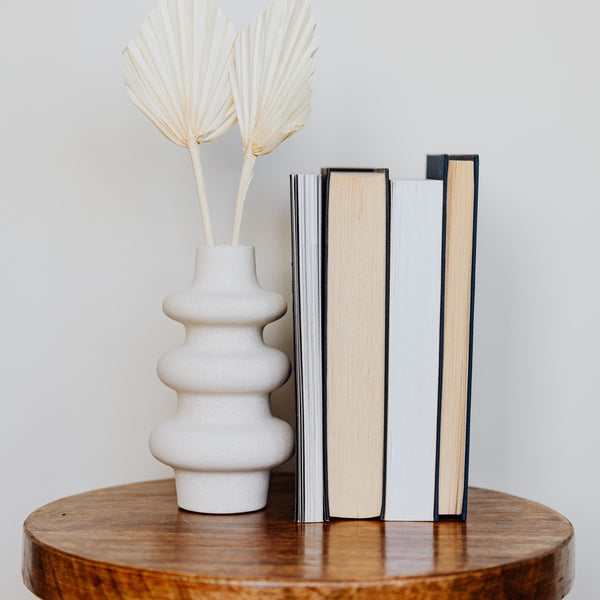How White, Pink, Brown, and Blue Noise Affect Sleep

When your head finally hits the pillow at the end of a long day, there’s nothing dreamier than dozing off into deep, REM sleep. But without a bedtime routine and the right nighttime practices, many of us often stay awake in bed, thinking through our to-do lists or replaying moments of the day in our minds.
According to the Centers for Disease Control and Prevention (CDC), more than one in three adults in the U.S. are sleep deprived, getting less than seven hours of sleep a night. Enter: white noise. — Its colorful spectrum of sonic hues, including brown, pink, and blue, help sleep-deprived individuals catch those coveted zzz’s.
Each “color” is based on its unique sound frequency and energy, but all of them can help relax your brain and induce sleep. As noise machines, sleep aids, and meditation apps become increasingly popular, understanding the distinction between these noises can make a world of difference for beauty sleep. Pair it with a Brentwood Home mattress and you’re bound to be in dreamland in no time. Here’s our sleep noise breakdown:
White Noise

Think of white noise as a “blanket sound” for all frequencies that the human ear can hear (typically in the 20-2,000 Hertz range), like a clean white sheet blocking out all other noise disturbances. With white noise, energy is distributed equally across frequencies and sounds like the faint static of an empty channel on cable TV.
It’s also a tried-and-true sleep aid; research even shows white noise’s effectiveness in getting you to fall asleep faster and helping you stay asleep. It’s an especially trusted resource for new parents, who count on white noise to lull their babies to dreamland and can include anything from the hum of an air conditioning unit to a fan or radio static.
Pink Noise

Pink noise is similar to white noise in its consistent hum. But rather than a static-like sound, pink noise has more ebbs and flows, with lower base notes that add depth. For example, the crest and trough of gentle ocean waves give pink noise more shape and comfort to your sleeping ear. It’s also thought to occur more commonly in nature, including rain and rustling leaves.
Research on pink noise is limited but promising. A study in the Journal of Theoretical Biology found that consistent pink noise reduced brain waves, which increases stable sleep. There may even be some memory-enhancing benefits associated with listening to pink noise while you sleep.
Brown Noise

Brown noise is deceptively known as red noise and named after the botanist Robert Brown, not the color. This type of noise is for the sleepers who are all about the bass. Brown noise has stronger lower frequencies, like a rumbling thunderstorm, a rushing river, or the sound of crashing waterfalls. Like white noise, the sounds in brown noise are random but have lower energy as frequency increases.
Some even think brown noise is the best for concentration — leading The Cut to recommend brown noise as the best playlist while you work — even though the research on brown noise for sleep is limited. But who wouldn’t want to fall asleep next to a rushing river?
Blue Noise

Blue noise is the avant-garde option of sleep sounds’ sonic hues. In complete contrast to brown noise, blue noise is all about the treble: high-pitched and high energy. With blue noise, energy is concentrated in higher frequencies and increases proportionally with every octave you jump. Though blue noise may not sound very relaxing, sleepers who aren’t as sensitive to higher-pitched sounds may prefer blue noise (which has often been compared to the hiss of a water spray).
And it’s not to be overlooked. Audio engineers love blue noise for its ability to smooth out the wrinkles of a soundtrack so there are fewer irregularities. After all, it comes down to personal preference and what will help you get the rejuvenating sleep to help fuel your body and mind.



